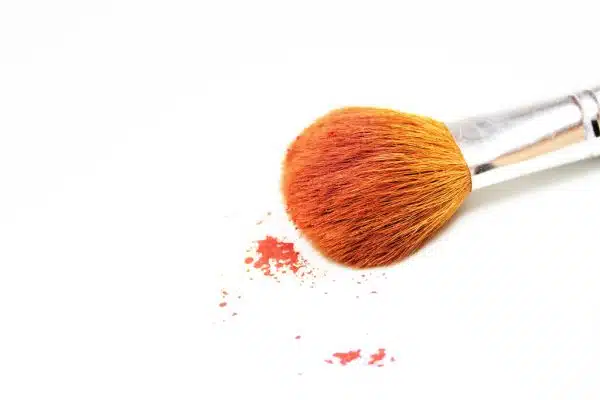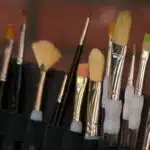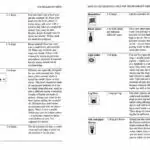As a beauty expert, the importance of clean makeup brushes cannot be overemphasized. Dirty brushes not only affect the quality of your makeup application but can also lead to skin irritation and infections. While many people may overlook this crucial aspect of their beauty routine, cleaning your makeup brushes regularly is essential for maintaining healthy skin.
In this article, we will discuss how to clean makeup brushes with ease. We understand that the process of cleaning your brushes can seem daunting and time-consuming, but it doesn’t have to be. With the right tools and techniques, you can achieve squeaky-clean brushes in no time. Our goal is to provide you with easy-to-follow steps that will not only ensure your makeup products apply flawlessly but also keep your skin healthy and radiant. So, let’s dive into the world of brush cleaning and discover how you can elevate your beauty routine effortlessly!
Importance Of Clean Makeup Brushes
Makeup brushes are essential tools for any beauty routine. They allow for precise application of makeup and can help achieve a flawless finish. However, it is important to remember that these brushes need to be cleaned regularly to ensure they are free from bacteria and other harmful microorganisms. The benefits of clean makeup brushes go beyond just maintaining hygiene.
Clean makeup brushes lead to better application of makeup. When brushes are free from product buildup and dirt, they pick up and distribute product more evenly on the skin. This leads to a more natural-looking finish and reduces the chances of streaks or patches on the face. Techniques such as spot-cleaning or deep-cleaning can be used to maintain the cleanliness of your brushes.
Regular cleaning also extends the lifespan of your makeup brushes. Dirty brushes can become damaged over time due to product buildup, making them less effective at their job. By cleaning your brushes, you not only maintain their quality but also save money in the long run by avoiding premature replacement costs.
Using dirty makeup brushes poses risks such as bacterial infections or clogged pores which can lead to breakouts. Neglecting to clean your makeup tools could leave you with uneven coverage, a patchy appearance, or even damage to your skin. In order to avoid these risks, it is important that you make cleaning your makeup brushes a priority in your beauty regimen.
Risks Of Using Dirty Brushes
Using dirty makeup brushes comes with several risks and consequences, particularly for your health and hygiene. When you use a brush that hasn’t been cleaned in a while, it accumulates dead skin cells, oils, and bacteria. These buildups can cause acne breakouts or other skin irritations. It’s essential to maintain good hygiene by cleaning your brushes frequently to prevent infections caused by bacteria.
Using dirty brushes can also lead to cross-contamination of germs from one product to another. For instance, if you use the same brush for different products without cleaning it first, there is a high risk of transferring germs from one product to another, such as from eye shadow to lipstick. This cross-contamination can cause infections or allergic reactions on your face.
To maintain good health and hygiene practices when using makeup brushes, it’s crucial to clean them regularly. The consequences of not doing so could be severe. Therefore, make sure you clean each brush thoroughly after every use and sanitize them weekly to avoid any risk of infection or irritation on your skin.
Moving forward into the next section, let’s explore how often you should clean your makeup brushes to ensure optimal health and hygiene practices with your makeup routine.
How Often Should You Clean Your Brushes?
Understanding the risks of using dirty brushes is crucial in maintaining healthy skin. However, it’s equally important to know how often you should clean your makeup brushes. The frequency of brush cleaning depends on how often you use them. If you’re a daily user, experts recommend washing your brushes once a week.
Cleaning your brushes regularly has numerous benefits. It helps to get rid of bacteria, dirt, and oils that may accumulate on the bristles over time. This will prevent breakouts and other skin irritations that may result from using dirty brushes. Additionally, frequent cleaning extends the lifespan of your brushes by preventing damage caused by product buildup.
To ensure that you maintain healthy skin and extend the life of your brushes, it’s essential to clean them regularly. By doing so, you’ll enjoy a smooth and flawless makeup application every time. However, before embarking on this task, let’s look at some tools that you’ll need for effective brush cleaning.
Tools You’ll Need For Brush Cleaning
To properly clean your makeup brushes, you will need to have the right tools on hand. There are a few key items that you should gather before starting this task. First, you will need a bowl or container to hold your cleaning solution. It’s best to use something that is shallow and wide enough to accommodate your largest brush. Next, you will need a brush cleaning mat or glove. These are designed with ridges and bumps that help to remove buildup from the bristles without damaging them.
Another essential tool for brush cleaning hacks is a drying rack. This can be as simple as a towel laid flat on a countertop, but there are also specialty racks available that allow your brushes to hang upside down while they dry. Finally, you will need a DIY brush cleaner solution. While there are many commercial products available for this purpose, making your own at home can be just as effective and more cost-efficient.
Now that you have gathered all of the necessary tools for cleaning your makeup brushes, it’s time to get started! By using these items in conjunction with some clever brush cleaning hacks, you can easily keep your brushes in top condition and extend their lifespan. In the next section, we will discuss how to choose the right cleaning solution for your brushes based on their type and level of buildup.
Choosing The Right Cleaning Solution
Did you know that the average woman spends up to $15,000 on makeup in her lifetime? With such a significant investment, it’s essential to take proper care of your tools, including your makeup brushes. One crucial aspect of brush maintenance is choosing the right cleaning solution.
When selecting a cleaning solution for your brushes, consider budget-friendly options such as dish soap or baby shampoo. These products are readily available and effective at removing dirt and debris from bristles. Another benefit of using these household items is that they’re gentle enough not to damage or strip away natural oils from your brushes.
For those seeking a more natural alternative, consider using ingredients found in your kitchen pantry. A mixture of olive oil and vinegar can effectively clean and condition your brushes without harmful chemicals. Additionally, incorporating tea tree oil into the solution can provide antifungal properties that help prevent bacteria growth on brushes.
Now that you’ve chosen the right cleaning solution for your brushes let’s move onto how to clean them with a solid cleaner.
How To Clean Brushes With A Solid Cleaner
Now that you have chosen the right cleaning solution for your makeup brushes, it’s time to learn how to clean them with a solid cleaner. Solid cleaner alternatives are becoming more popular because they are convenient and easy to use. They come in various sizes and shapes, making them perfect for traveling or on-the-go touch-ups. However, there are also some downsides to using solid cleaners.
One of the pros of using a solid cleaner is that they are mess-free. Unlike liquid cleaners, they do not spill or leak when traveling, which can save you from a disaster in your makeup bag. Additionally, solid cleaners often contain conditioning agents that leave your brushes feeling soft and silky after cleaning. On the other hand, one of the cons of using a solid cleaner is that they may not be as effective in removing heavy product buildup or stubborn stains.
To use a solid cleaner, wet your brush under running water and swirl it around on the surface of the cleaner until it lathers up. Then, rinse your brush thoroughly under running water until all the soap residue is gone. Repeat this process until the water runs clear and all product buildup is removed from your brush.
In summary, while there are pros and cons to using solid cleaners for cleaning makeup brushes, they can be a convenient option for those who are always on-the-go or prefer less mess during their beauty routine. Now that we have covered how to clean brushes with a solid cleaner let’s move onto exploring how to clean brushes with a liquid cleaner.
How To Clean Brushes With A Liquid Cleaner
To properly clean makeup brushes with a liquid cleaner, supplies such as a mild liquid cleaner, paper towels, and a container are essential.
Once the supplies are gathered, submerge the brush in the liquid cleaner, ensuring all bristles are saturated.
Allow the brush to remain in the liquid cleaner for a few minutes, then gently massage the bristles in between your fingers.
Rinse the brush in lukewarm water, ensuring all of the liquid cleaner is removed.
To dry the brush, use a paper towel and remove any excess moisture, then shape the bristles.
Finally, allow the brush to air dry before use, preferably overnight.
Supplies Required
When it comes to cleaning makeup brushes with a liquid cleaner, there are a few supplies that you will need. First and foremost, you will need the cleaning solution itself. There are many different brands and types of brush cleaners on the market, so it is important to choose one that is specifically designed for your brushes and your skin type. Some recommended brands include Cinema Secrets, BeautyBlender Liquid Blendercleanser, and Clinique Makeup Brush Cleanser.
In addition to the cleaning solution, you will also need a clean bowl or sink filled with warm water. This will be used to rinse your brushes after they have been cleaned with the liquid solution. It is important to use warm water rather than hot or cold, as this can damage the bristles of your brushes.
Lastly, you will need a clean towel or paper towel to dry your brushes on. After you have washed them with the liquid cleaner and rinsed them in warm water, gently squeeze out any excess moisture and then lay them flat on the towel or paper towel to dry. Avoid standing your brushes upright while they dry, as this can cause water to seep into the base of the bristles and damage them over time.
By using these cleaning techniques and recommended brands of brush cleaner, you can easily keep your makeup brushes clean and in good condition for years to come. Remember to always wash your brushes regularly (at least once a week) to prevent bacteria buildup and ensure that they work properly when applying makeup.
Cleaning Process
Cleaning makeup brushes regularly is essential to maintain their quality and avoid bacterial infections. The use of a liquid cleaner is an effective way to clean your brushes, but the cleaning process must be done correctly to ensure that the bristles are not damaged. One crucial aspect of the cleaning process is the cleaning frequency. Makeup artists recommend washing your brushes at least once a week, but you may need to do it more frequently if you use them daily or share them with others.
When cleaning your brushes with a liquid cleaner, it’s important to follow proper drying techniques. After washing your brushes with the cleaning solution and rinsing them in warm water, gently squeeze out any excess moisture and lay them flat on a clean towel or paper towel to dry. Avoid standing your brushes upright as this can cause water to seep into the base of the bristles, damaging them over time.
Another tip for drying your brushes is to let them dry completely before using them again. You can also reshape the bristles while they’re still damp by gently pressing and pulling them back into shape before laying them flat to dry completely. By following these techniques for drying your brushes after cleaning, you’ll be able to keep them in good condition and extend their lifespan significantly.
Final Steps
After discussing the importance of cleaning makeup brushes regularly and the proper techniques for washing and drying them, it’s crucial to emphasize the final steps in ensuring that your brushes are clean and ready for use. One essential aspect is using cleaning products that are specifically designed for brushes. These products not only effectively remove dirt, oil, and makeup residue but also help to condition the bristles, keeping them soft and supple.
Once you’ve washed and dried your brushes, you can take a few extra steps to ensure their cleanliness. One option is to use a brush sanitizer spray or solution that kills any remaining bacteria on the bristles. This step is particularly important if you’ve been using your brushes on others or have had an infection such as conjunctivitis or cold sores. You can also store your brushes in a clean container or case to protect them from dust and other contaminants.
Finally, it’s essential to pay attention to the condition of your brushes over time. Even with proper cleaning techniques, brushes will eventually wear out and need replacing. Signs that it’s time for new brushes include shedding bristles, frayed ends, or a change in shape or texture. By taking care of your brushes properly and replacing them when necessary, you’ll be able to enjoy high-quality makeup application for years to come.
How To Clean Brushes With Household Items
Cleaning your makeup brushes is essential to maintain their performance and longevity. While there are many brush cleaners available in the market, you can also clean your brushes with household alternatives and natural cleaning solutions. Not only are these alternatives affordable, but they are also gentle on both your brushes and skin.
One of the most popular household items for cleaning makeup brushes is baby shampoo. This mild shampoo is perfect for removing dirt and bacteria from your brushes without damaging the bristles. To use, simply wet your brush with warm water, apply a small amount of baby shampoo to the bristles, and gently massage them to create a lather. Rinse thoroughly with warm water until the water runs clear.
Another natural cleaning solution for makeup brushes is vinegar. Vinegar has antibacterial properties that can effectively remove any germs or bacteria lingering on your brushes. To use, mix equal parts of vinegar and warm water in a bowl or cup. Dip your brush into the mixture and swirl it around for a few seconds before rinsing it thoroughly with warm water.
Cleaning your makeup brushes with household alternatives and natural cleaning solutions is not only effective but also eco-friendly. By using these simple methods, you can keep your brushes clean and hygienic without harming the environment or spending too much money on expensive brush cleaners. In the next section, we will discuss how to dry your freshly cleaned brushes properly to ensure their longevity and performance.
Drying Your Brushes Properly
Cleaning your makeup brushes is an essential part of maintaining a healthy and hygienic beauty routine. Now that you have successfully cleaned your brushes, it’s important to dry them properly to prevent any bacteria or mold growth. Air drying and towel drying are the two most common methods of drying brushes, but which one is the best? Let’s take a closer look at the pros and cons of each.
Air drying involves leaving your brushes out in the open air to dry naturally. This method is best for larger brushes that can take longer to dry, such as powder or blush brushes. The advantage of air drying is that it allows the brush hairs to fan out, preventing any clumping or damage. However, air drying can take up to 24 hours, so it’s not the best option if you need your brushes quickly.
Towel drying involves using a clean towel to gently squeeze out any excess water from your brushes before laying them flat on the towel to dry. This method is best for smaller brushes that can dry quicker, such as eye shadow or liner brushes. The advantage of towel drying is that it speeds up the drying process significantly and prevents any water damage to wooden handles. However, be careful not to rub too hard on the brush hairs as this can cause damage.
Best practices for drying brushes include reshaping them while they are still wet by gently pulling and shaping them back into their original shape. Also, make sure to lay them flat on a towel rather than standing them upright as this can cause water to seep down into the handle and loosen the glue holding the bristles together. By following these simple steps, you’ll have clean and well-maintained makeup brushes ready for use in no time.
Now that we’ve covered how to properly dry your makeup brushes let’s move on to storing them correctly so they stay in good condition for longer periods of time.
Storing Your Brushes
After cleaning your brushes, it is important to store them properly to maintain their shape and prevent contamination. One option is to invest in a brush holder, which can be found at most beauty supply stores or online retailers. These holders come in various sizes and styles, from simple cylindrical containers to more elaborate designs with separate compartments for each brush. Choose one that fits your collection and aesthetic preferences.
If you prefer a more DIY approach, there are many brush holder ideas available online. Some popular options include using empty candle jars or mason jars filled with beads or rice to hold the brushes upright. You could also repurpose an old vase or cup by filling it with sand or pebbles and arranging the brushes inside. Whatever method you choose, make sure the holder is clean and dry before placing your brushes inside.
Organizing your brush collection can also help with storage and maintenance. Consider separating your brushes by type (e.g., foundation, eyeshadow, blush) or size (e.g., large powder brushes, small detail brushes) so that you can easily find what you need when applying makeup. You could use separate pouches or dividers within a larger makeup bag to keep everything organized. By taking care of your brushes in this way, you will extend their lifespan and ensure that they continue to perform well over time.
Transition: Now that you have learned about storing your brushes properly, let’s move on to some tips for maintaining clean brushes without damaging them in the process.
Tips For Maintaining Clean Brushes
After storing your brushes properly, it’s time to give them a good cleaning. Ironically, one of the most neglected aspects of a beauty routine is cleaning makeup brushes. It’s important to note that dirty makeup brushes aren’t just unsanitary, but they can also lead to unwanted breakouts and skin irritation.
When it comes to cleaning solution options, there are plenty available on the market. Look for ones specifically designed for makeup brushes, as they’re formulated to break down product buildup without damaging the bristles. Alternatively, you can opt for DIY brush cleaner recipes using household items such as dish soap and olive oil. It’s essential to rinse your brushes thoroughly after using any solution or cleaner.
Different brush types require different cleaning methods. For example, foundation brushes tend to have more buildup than other types of brushes and will need a deeper clean. Whereas eyeshadow brushes may only require a quick spot clean between uses if you’re using different colors. It’s worth taking some time to research how best to clean specific brush types so that you don’t damage them during the process.
Transitioning into the subsequent section about cleaning specific brush types (e.g., foundation, eyeshadow, etc.), it’s crucial to understand how each type should be cleaned properly to maintain their quality and longevity.
Cleaning Specific Brush Types (E.G., Foundation, Eyeshadow, Etc.)
When it comes to cleaning makeup brushes, it’s important to take into account the different brush types. Foundation brushes, for example, are typically made of synthetic bristles that can withstand more rigorous cleaning methods than natural hair brushes. It’s also important to consider brush material compatibility when selecting a cleaning solution. For instance, using an alcohol-based cleaner on a natural hair brush can lead to dryness and breakage.
One common mistake in cleaning eyeshadow brushes is not thoroughly removing all traces of product from the bristles. This can result in muddied colors and uneven application. Another mistake is using hot water, which can damage delicate bristles and cause them to shed. Instead, use lukewarm water with a gentle cleanser specifically designed for makeup brushes.
Different brush types require different cleaning techniques, so it’s important to identify each type and its corresponding care requirements. Taking proper care of your brushes will extend their lifespan and ensure they perform their best. In the next section, we’ll discuss how to deep clean your makeup brushes for a more thorough cleanse.
How To Deep Clean Your Brushes
Before you begin deep cleaning your makeup brushes, you should take the time to select the best cleaning supplies for the job.
For brushes composed of synthetic fibers, use a mild shampoo or soap, making sure to avoid harsh detergents.
For natural-haired brushes, opt for a gentle conditioning shampoo or a soap specifically formulated for natural hair.
Once you have chosen your cleaning supplies, prepare your brushes for cleaning by soaking them in lukewarm water for about 5 minutes.
After the brushes have soaked, gently massage the bristles to remove any makeup residue.
Finally, rinse the brushes with lukewarm water, reshape the bristles, and let them air dry before using them again.
Choose Cleaning Supplies
As a professional makeup artist, I understand the importance of maintaining clean brushes. One crucial aspect of deep cleaning your brushes is choosing the right cleaning supplies. When it comes to selecting cleaning products for your brushes, there are many options to choose from, but not all are created equal.
To begin with, you should consider using eco-friendly options when selecting cleaning supplies. Eco-friendly brush cleaners are free from harsh chemicals and do not harm the environment. They are made from natural ingredients such as essential oils, which provide excellent cleansing properties without damaging the bristles of your brushes. Additionally, these products come in recyclable packaging that will help reduce waste.
Another factor to consider when choosing supplies includes the type of brush you own. For instance, synthetic brushes require different cleaning agents than natural hair brushes do. Therefore, it is imperative to read the label and ensure that you select products that are suitable for your specific brush types. By doing so, you can ensure that your brushes will last longer and remain in top condition while being thoroughly cleaned.
Prepare Brushes
Pre cleaning steps are essential to ensure that your brushes are ready for deep cleaning. Begin by removing any excess product from the brush using a tissue or towel. This step will help prevent the buildup of makeup, dirt, and oil on your brushes, making the deep cleaning process much more effective.
Preparing your brushes for deep cleaning also involves separating them into categories based on their use. For example, you should have a separate set of brushes for eye makeup, face makeup, and lip products. By doing so, you’ll avoid cross-contamination between different products and maintain the integrity of each brush’s bristles.
The best cleaning methods for your brushes involve using gentle yet effective cleansers that will remove all impurities without damaging the bristles. You can opt for mild soap or specialized brush cleaners that contain natural ingredients like tea tree oil or eucalyptus oil. Remember to rinse your brushes thoroughly after washing them and reshape the bristles before letting them dry flat on a clean surface to prevent water from seeping into the ferrule. With these pre-cleaning steps and excellent cleaning methods in place, you can be sure that your makeup brushes remain in top condition for longer periods while providing an optimal finish every time you use them.
Clean Brushes
Once you have prepped your brushes, it’s time to deep clean them. Clean brushes are crucial in achieving flawless makeup application and maintaining healthy skin. Deep cleaning your brushes every two weeks can help prevent the buildup of bacteria and germs that may cause breakouts, infections, and other skin problems.
You can opt for a DIY brush cleaner using natural ingredients like vinegar or olive oil. However, be sure to follow the right proportions when mixing the solution to avoid damaging your brushes’ bristles. You can also choose specialized brush cleaners that contain natural ingredients like tea tree oil or eucalyptus oil. These natural brush cleaning methods effectively remove all impurities from your brushes without causing any harm to their quality.
To deep clean your brushes, wet them under running water and apply the cleanser on the bristle tips. Massage gently using circular motions until all makeup residue is removed. Rinse thoroughly with lukewarm water, reshape the bristles, and let them dry flat on a clean surface. Avoid drying them upright as this may cause water to seep into the ferrule, leading to damage over time. By following these simple steps for clean brushes regularly, you’ll ensure that your makeup application is always smooth and flawless while keeping your skin healthy and free from bacteria buildup.
When To Replace Your Brushes
After deep cleaning your makeup brushes, it’s important to know when it’s time to replace them. Signs of brush wear include shedding bristles, a change in shape or texture, and difficulty in applying product evenly. It’s important to replace brushes that are showing signs of wear to ensure the best application and avoid any potential skin irritation.
To prolong the lifespan of your brushes, there are a few tips you can follow. First, make sure to store them properly by keeping them in a dry place with the bristles facing upwards. This will prevent moisture buildup and maintain the shape of the brush. Additionally, avoid using harsh chemicals or hot water when cleaning your brushes as this can damage the bristles and shorten their lifespan.
By following these tips for maintaining your makeup brushes, you can ensure they last longer and provide optimal application. Remember to regularly check for signs of wear and replace any brushes that are no longer performing effectively. Your brushes are an investment in your beauty routine, so taking care of them is essential for achieving flawless looks every time.
Final Thoughts On Brush Cleaning
What is the importance of consistency when it comes to cleaning your makeup brushes? As a beauty expert, I cannot stress enough how crucial it is to make brush cleaning a regular part of your routine. Not only does this help prolong the lifespan of your brushes, but it also ensures that you are applying makeup with clean tools, reducing the chances of any skin irritation or breakouts.
When it comes to cleaning methods, there are numerous options available. Some prefer using traditional soap and water, while others opt for specialized brush cleaners. It’s essential to find what works best for you and your brushes. Trying out different cleaning methods can help you determine what method provides the best results for your specific needs.
In conclusion, consistent brush cleaning is vital in maintaining healthy skin and prolonging the life of your brushes. Experimenting with various cleaning methods can help you find what works best for your needs and preferences. Remember that taking care of your brushes not only enhances their performance but also demonstrates a commitment to self-care and personal hygiene.
Conclusion
Clean makeup brushes are an essential part of any beauty routine. They help to ensure that your makeup goes on smoothly and evenly, while also reducing the risk of infection and breakouts. Dirty brushes can harbor bacteria, oil, and dead skin cells, which can cause irritation or worse, infection. It is important to clean your brushes regularly to maintain their quality and extend their lifespan.
To clean your brushes effectively, you will need a few essential tools such as a brush cleaning pad or mat, a gentle soap or shampoo, and water. Different types of brushes require different cleaning methods, so it is important to understand how to properly clean each type of brush. For example, synthetic brushes require a gentler cleaning solution than natural hair brushes.
It is also crucial to know when to replace your old brushes with new ones. Even with regular cleaning, makeup brush bristles can become damaged over time and lose their shape. This can affect the quality of your makeup application and lead to uneven results.
In conclusion, maintaining clean makeup brushes is essential for healthy skin and optimal makeup application. By using the right tools and cleaning solutions for each type of brush, you can keep them in great condition for years to come. Remember that proper care not only enhances the performance but also extends the lifespan of your valuable beauty tools. So take some time out for regular brush maintenance – it’s worth it!
Image Credits
- “Makeup Brush on White Background” by Trostle (featured)





























